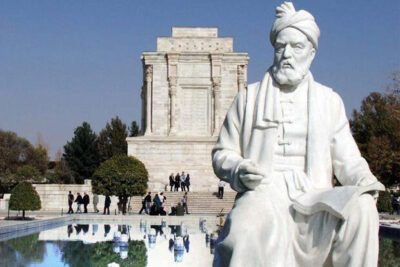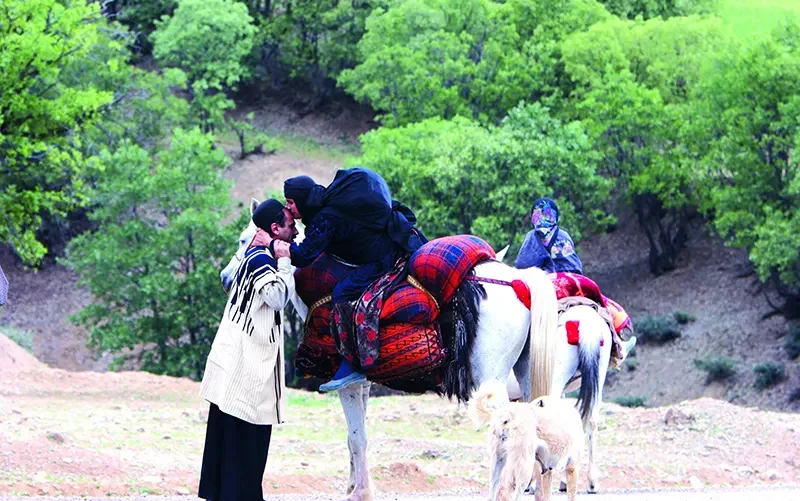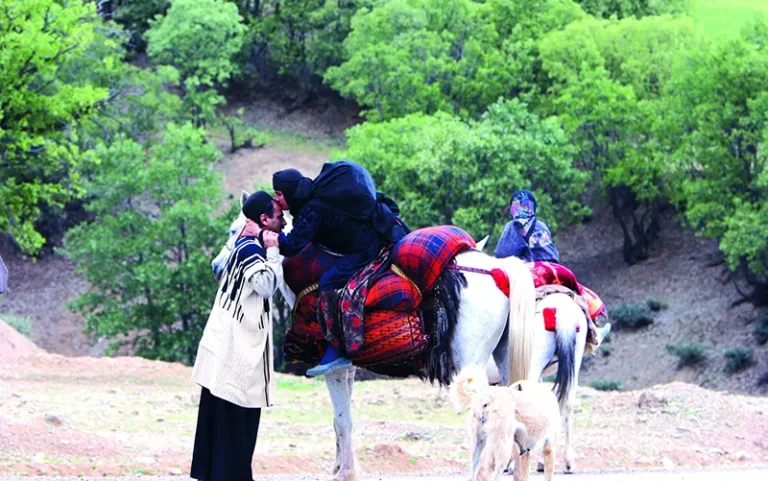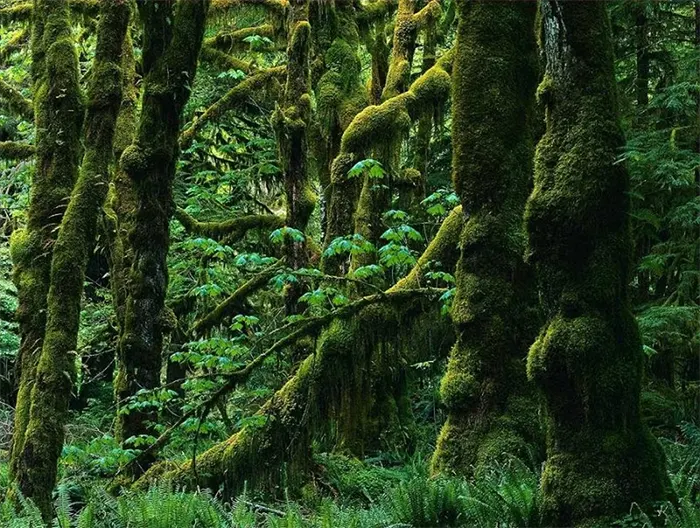lOCATION

A Vast Country in Southwest Asia
2nd largest country in the Middle East and the 17th largest country in the world located between Europe, the Middle East, and Asia.

Long Sea and Land Borders
The Caspian Sea, Persian Gulf, and Gulf of Oman and seven countries of Afghanistan, Armenia, Azerbaijan, Iraq, Pakistan, Turkey.
Landforms & landscapes

Mountains
The Alborz Mountains stretches in the north, and Zagros Mountains are located along its western borders. Iran's highest point, Mt. Damavand reaches 18,934 ft. (5,771m).

Plateaus
The central and eastern portion is covered by the Plateau of Iran. The Dasht-e Kavir is a sandstone and salty desert plateau that in the heat of summer is one of the hottest places on the planet.

Rivers
The most significant river is Karun, in the southwestern corner of the country.
Climate & Weather
Generally, Iran is an arid and semiarid country but it has different types of climate due to its vastness;
- Mild and quite wet on the coast of the Caspian Sea
- Continental and arid in the plateau
- Cold in high mountain
- Desert and hot on the southern coast and in the southeast
You experience mild spring and fall, hot and dry summer, mild to cold winter across Iran.

Iran is a four season country to travel though spring and fall are the best time; from March to May, September to November.

Iran, Land of Aryans
Iran (former Persia) is one the most ancient lands in the world. The name of Iran, meaning the “Land of Aryans“, was chosen by the Medes- most important of Aryan tribes – who immigrated to the plateau under the southern coastline of the Caspian Sea, about 1500 BC. The Persians were the Indo-European people who had come to the Caspian Sea from central Asia about 687 BC.




culture
Iranian culture is one of the oldest in the region, and it has influenced cultures like Italy, Macedonia, Greece, Russia, the Arabian Peninsula, and parts of Asia.
Iran has a great art heritage visible in architecture, paintings, calligraphy, and poetry. This heritage was translated into several languages and influenced many cultures. Contemporary literature was influenced by classical Persian poetry although it reflects the particularities of modern-day Iran.
Click on the below button to see UNESCO-Registered Tangible and Intangible Cultural Heritages of Iran (about 50 heritages!).



Customs
language

Farsi (Persian)
The official language of Iran is Persian or Farsi and in its present form, has been spoken now spoken in Tehran, Isfahan, Fars, Khorasan, Kerman and Yazd, and some other provinces. The other various dialects of Persian are also spoken by ethnic groups.
lITERATURE
Persian literature spans two and a half millennia and is the jewel in the crown of Persian culture.
It has profoundly influenced the literatures of Ottoman Turkey, Muslim India and Turkic Central Asia and has been a source of inspiration for Goethe, Emerson, Matthew Arnold and Jorge Luis Borges among others. Goethe considered Persian literature as one of the four main bodies of world literature.
Some of the great masters of the Persian language are:

Ferdowsi
The Persian epic poet (940–1020) and the author of Shahnameh ("Book of Kings").

Hafez
Hafez (1315-1390); one of the finest lyric poets of Persia.

Saadi
Saadi (1210 - 1291 or 1292) titled the "Master of Speech", the writer of Bustan & Golestan books.

Omar Khayyam
Khayyam (1048 – 1131); the designer of Jalali calendar and the author of Rubaiyat (poems in the form of quatrains).
people & tribes

Persians
Making up 61% of the population, Persians and their culture dominate the Iranian population. They occupy major urban areas such as Tehran, Esfahan, Mashhad, Yazd and Shiraz. Most Persians are Shia Muslims, the predominant religious group in Iran.

Azeris (Azerbaijanis)
Azeris are the second largest ethnic group in Iran, making up an estimated 16% of the total population. They are located in northwestern Iran close to the border with Azerbaijan. Azeris speak Turkic similar to the Turkish language and are mostly Shia Muslims.

Kurds
Kurds are ranked as the third largest ethnic group in Iran. They make up approximately 10% of the population and are concentrated in the western mountains of Iran. Their majority are Sunni Muslims.

Lurs
Lurs form the fourth largest ethnic group in Iran. They constitute 6%of the total population and mostly live in Mt. Zagros. The Lurs are Shia Muslims and speak Lurish dialect of Persian language. They are of two main groups: Small Lur in Lorestan & Ilam and Great Lur that is Bakhtiari Lur.

Baluchs
The Baluchs are a smaller minority who inhabit Iranian Baluchistan, which borders on Pakistan

Guilaks & Mazanis
The peopl who live on the south coast of the Caspian Sea.

Arabs
Arabs are a smaller minority group in Iran at an estimated 2% of the population. They primarily occupy oil rich regions in Iran; Khuzestan & the Persian Gulf coastal region.
Nomadic Tribes

Bakhtiari
The Lur nomads who is the biggest tribe doing a seasonal migration (Kuch).

Shahsavan
The largest Turkic nomads in the northwest of Iran.

Qashqai
The Turk nomads that is the most reputed tribe in southern Iran and the north of the Persian Gulf.

Turkmen
A Turk tribe native to Central Asia with a "semi-nomadic lifestyle that are located in the northern and northeastern of Iran.
rELIGION



- Islam is the official religion in Iran. 90% are Shiite Muslims and most of the remainder are Sunnis (mostly Kurds, Arabs and Turkmen).
- Zoroastrian, Jewish, Christian and Assyrian minorities living in Iran are recognized and protected.
pre-Islamic Architecture styles
Architecture is the field in which Persia has made the most contribution to world culture. The earliest example of Persian architecture is the remains of the outstanding Elamite ziggurat at Chogha Zanbil, which dates back to the 3rd millennium BC. Although the difference between Persian and Islamic architecture is quite substantial, the influence of Persian architecture is clearly evident on Islamic architecture, particularly in structures made in Central Asia, Afghanistan, Pakistan, and India.
Parsian Style
Parthian Style
Including: Pre-Parsian style (up until the eighth century BCE) e.g. Chogha Zanbil, Median & Achaemenid style manifesting in Persepolis, Susa, Ecbatana, Zoroastrian temples, and mausoleums erected in honor of fallen kings (such as the Tomb of Cyrus the Great).
Include designs from the Seleucid era e.g. Anahita Temple, Parthian & Sassanid era e.g. Ghal’eh Dokhtar, the Taq-i Kisra, Bishapur.


Islamic Architecture styles
From the Islamic period, the architectural achievements of the Seljuq, Il-Khanid, and Safavid dynasties are particularly noteworthy. During that time Iranian cities such as Neyshabur, Isfahan, and Shiraz came to be among the great cities of the Islamic world, and their many mosques, madrasahs, shrines, and palaces formed an architectural tradition that was distinctly Iranian within the larger Islamic milieu, according to Encyclopedia Britannica.
The usage of iwans (porticos) and arches, gardens, fountains, and pools, domes, symmetry, usage of Muqarnas, and calligraphy are some common elements among most of the monuments constructed upon Persian architecture.

The Khorasani style
From the late 7th until the end of the 10th century CE. e.g. Jameh Mosque of Nain and Jameh Mosque of Isfahan.

The Razi style
From the 11th century to the Mongol invasion period which includes the methods of Samanid period, e.g. Samanid Mausoleum, Ziyarid period, e.g. Gonbad-e Qabus, Seljukid period, e.g. Kharraqan towers.

The Azari style
From the late 13th century to the appearance of the Safavid dynasty in the 16th century), e.g. Soltaniyeh, Arg-i Alishah, Goharshad Mosqu Jameh mosque of Yazd.

The Isfahani style
Spanning through the Safavid, Afsharid, Zand, and Qajarid dynasties starting from the 16th century onward, e.g. Chehelsotoon, Ali Qapu, Agha Bozorg Mosque, Kashan, Shah Mosque, Sheikh Lotf Allah Mosque in Naqsh-i Jahan Square.
music
For centuries Islamic injunctions inhibited the development of formal musical disciplines, but folk songs and ancient Persian classical music were preserved through oral transmission from generation to generation.



Cuisine



Persian Cuisine Is Known For Its Numerous Delicacies.
Persian cuisine is characterized by the use of lime and saffron, the blend of meats with fruits and nuts, a unique way of cooking rice, and Iranian hospitality. Food is subtly spiced, delicate in flavor and appearance, and not typically hot or spicy.
For Iranians the food is not just a meal but rather a culture in which they use food to express their identity, community, values, status, power, artistry and creativity. That’s why Iranian immigrants bring the food with them wherever they go and cooking Persian food is a way of preserving their culture when they move to new places.
Kebab is the national dish of Iran and you can find it in any Persian Restaurant. The meal is simple, consisting of steamed, saffroned Persian rice and Kebab.
There are various types of stews in Iran and some of classic and most popular ones are listed below:
- Fesenjan (Pomegranate Walnut Stew)
- Gheymeh (Yellow Split Peas Stew)
- Gormeh Sabzi (Green Herb Stew)
- Khoresh Bademjan (Eggplant Stew)
Flora
There is a great diversity in vegetation cover in Iran:
- Subtropical forests on the southern Caspian coastal plain and the northern foothills of the Alborz
- Dry-adapted woodlands in the western Persian mountain ranges
- Dwarf shrubs and thorn cushion formations in the central areas
- Semi-desert shrublands in the coastal areas along the Persian Gulf.



Fauna
- Wildlife includes leopards, bears, hyenas, wild boars, ibex, gazelles, and mouflons, which live in the wooded mountains.
- Jackals and rabbits are common in the country’s interior.
- Wild asses live in the kavīrs.
- Cheetahs and pheasants are found in the Caspian region, and partridges live in most parts of the country.
- Aquatic birds such as seagulls, ducks, and geese live on the shores of the Caspian Sea and the Persian Gulf, and buzzards nest in the desert.
- Deer, hedgehogs, foxes, and 22 species of rodents live in semi-desert, high-elevation regions.
- Palm squirrels and Asiatic black bears are found in Baluchistan.
- Tigers once inhabited the forests of the Caspian region but are now extinct.
- Some 200 varieties of fish live in the Persian Gulf, as do shrimps, lobsters, and turtles. Sturgeon, the most important commercial fish, is one of 30 species in the Caspian Sea. It constitutes a major source of export income for the government, in the production of caviar.
- Mountain trout abound in small streams at high elevations and in rivers that are not seasonal.
Food souvenirs




Artifacts
Artifacts from the “Neolithic revolution” (in which stone age hunters settled down to begin farming and stock-breeding over large areas of Near East) to tools and objects from the ensuing Bronze and Iron Age (pottery from Marlik Tepe, Luristan bronze objects and findings from Hasanlu) manifest the rich and striking examples of “material culture” in the land of the Aryans.
The Iranian plateau, bounded by high mountains and deserts, has seen the flow of many migrations and the development of many cultures, all of which have added distinctive features to the many styles of Persian art and architecture.

Carpet

Termeh

Ghalamkari

Khatamkari

Ghalamzani

Firoozeh Koobi

Minakari

Miniature Painting

